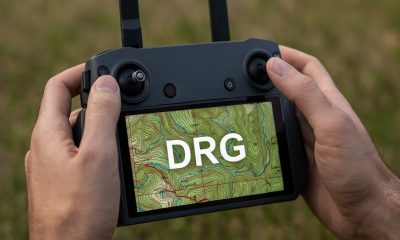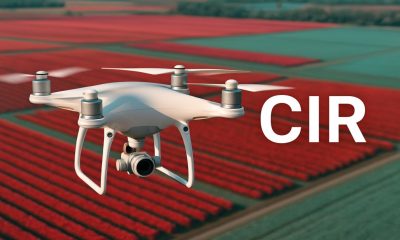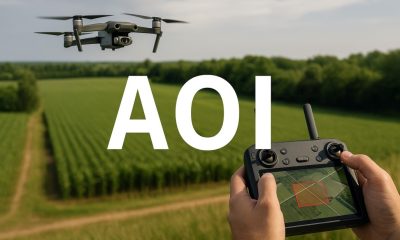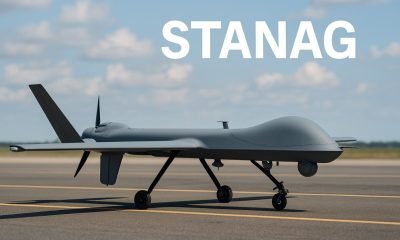- Acronym Guide
- AAM
- ABS
- AC
- ACAS
- ADS-B
- AFAC
- AGL
- AI
- AIM
- ALS
- AM
- AMA
- ANSP
- AOI
- APPI
- AUV
- AUVSI
- ARPAS-UK
- ASTM
- ATC
- BVLOS
- CAA
- CAAC
- CAB
- CASA
- CATT
- CBO
- CBR
- CBRN
- CDMA
- CDR
- CFR
- CIR
- COA
- COMINT
- CORS
- COTP
- COTR
- CPTED
- CV
- C2
- DAA
- DEM
- DFI
- DFS
- DGCA
- DHS
- DOD
- DPA
- DPEs
- DRG
- DRO
- DSM
- DSMX
- DSP
- DSSS
- DTM
- EASA
- EFT
- EO
- EOD
- EO/IR
- ELINT
- EMI
- ESC
- EVLOS
- eVTOLs
- FAA
- FCC
- FCS
- FHSS
- FICCI
- FLIR
- FOB
- FOV
- FPS
- FPV
- GBDAA
- GCP
- GCS
- GDPR
- GML
- GNSS
- GPS
- GSD
- GVC
- HDR
- HOGE
- IACRA
- ICAO
- ICS
- IMU
- INS
- IR
- ISA
- ISR
- ITU
- JARUS
- LAAMS
- LAANC
- LAATM
- LAI
- LBA
- LIDAR
- LOS
- LSALT
- MAC
- MAVLink
- MLIT
- MMS
- MSL
- MTOM
- NDAA
- NCSL
- NFZ
- NIST
- NMEA
- NOTAM
- NPA
- NPRM
- NTIA
- OBIA
- OEM
- OFDM
- OOP
- PASM
- PAV
- PCV
- PdM
- PEC
- PIC
- PID
- PIPL
- PLD
- PM
- PN
- PPK
- PPS
- PSM
- PWM
- UAM
- UAOP
- UAS
- UASTM
- UAV
- UCAVs
- UHD
- UHF
- USV
- UTM
- RAIM
- RCC
- RCS
- RFI
- ReOC
- RePL
- RMS
- ROI
- RPAS
- RPC
- RTH
- RTK
- SaR
- SAR
- SARP
- SBAS
- S.Bus
- SBIR
- SEDENA
- SfM
- SFOC
- SIGINT
- SLAM
- SMS
- SORA
- STANAG
- STTR
- sUAS
- TCAS
- TCCA
- TFR
- TIN
- TOF
- TP
- TPS
- TSA
- VHF
- VLOS
- VTOL
Drone Acronyms
What is PPS (Precise Positioning Service) & How Does it Work?
By
Jacob StonerTable Of Contents

Definition
PPS stands for Precise Positioning Service. It is an advanced GPS service provided by the United States Department of Defense, offering highly accurate and encrypted positioning data. PPS is primarily used by authorized military and government entities.
Relevance to the Industry
PPS is essential for operations where high accuracy and security are critical. In the context of drones, PPS enables precise navigation and positioning, which is crucial for tasks such as reconnaissance, surveillance, and precision strikes. This service enhances the capabilities of drones in military and governmental applications, ensuring mission success and operational safety.
How Does Precise Positioning Service (PPS) Work?
Precise Positioning Service (PPS) is an enhanced Global Positioning System (GPS) signal reserved for authorized users, primarily the military and select government agencies, providing highly accurate location and timing information. PPS is designed to offer more precise and secure GPS capabilities compared to the Standard Positioning Service (SPS) available to the general public. Here’s a detailed explanation of how PPS works:
1. System Components
- GPS Satellites: A constellation of at least 24 satellites orbiting the Earth, transmitting signals that include both Standard Positioning Service (SPS) and Precise Positioning Service (PPS) information.
- PPS-Capable Receivers: Specialized GPS receivers capable of decrypting and utilizing the PPS signal. These receivers are equipped with cryptographic modules to access the encrypted information.
- Control Segment: Ground control stations that monitor and manage the GPS satellite constellation, ensuring accurate signal transmission and satellite health.
- Encryption Keys: Classified cryptographic keys provided to authorized users to decrypt the PPS signals.
2. Signal Transmission
- Dual-Frequency Transmission: PPS utilizes two frequencies, L1 (1575.42 MHz) and L2 (1227.60 MHz). These dual frequencies help mitigate errors caused by ionospheric distortion.
- Encrypted Signal: The PPS signal is encrypted to prevent unauthorized access. This encryption ensures that only users with the correct cryptographic keys can utilize the signal for precise positioning.
3. Signal Reception and Decryption
- Receiving the Signal: PPS-capable receivers capture the L1 and L2 signals transmitted by the GPS satellites.
- Decryption: The receiver uses the cryptographic keys to decrypt the encrypted PPS signals. This process involves complex algorithms to ensure secure access to the precise positioning information.
- Combining Frequencies: By combining the data from both L1 and L2 frequencies, the receiver can correct for ionospheric errors, leading to more accurate positioning.
4. Position Calculation
- Triangulation: The receiver calculates its position using the time it takes for the signals to travel from multiple satellites to the receiver. This method, known as triangulation, requires signals from at least four satellites to determine a three-dimensional position (latitude, longitude, and altitude).
- Time Synchronization: PPS provides highly accurate timing information, which is critical for synchronizing military operations and other applications requiring precise time measurements.
5. Accuracy and Reliability
- Higher Accuracy: PPS offers significantly higher accuracy than SPS. While SPS accuracy for civilian use is typically within a few meters, PPS can provide positioning accuracy within a few centimeters to decimeters.
- Anti-Jamming and Anti-Spoofing: PPS signals are designed to be more resilient to jamming and spoofing attempts. The encryption and signal structure make it difficult for adversaries to interfere with or falsify the positioning data.
6. Applications and Use Cases
- Military Operations: PPS is extensively used in military applications for navigation, targeting, missile guidance, and command and control systems. Its high accuracy and secure nature are crucial for mission-critical operations.
- Government Agencies: Select government agencies use PPS for activities that require precise positioning and timing, such as disaster response, border security, and critical infrastructure protection.
- Research and Development: Authorized research institutions and contractors working on government projects may utilize PPS for developing advanced technologies and systems.
Understanding how Precise Positioning Service (PPS) works highlights its importance in providing highly accurate and secure GPS capabilities for authorized users. By leveraging encrypted signals and dual-frequency transmission, PPS offers superior positioning accuracy and resilience, supporting a wide range of critical applications.
Example in Use
“Military drones equipped with PPS were able to navigate with pinpoint accuracy, ensuring successful completion of reconnaissance missions in challenging environments.”
Frequently Asked Questions about PPS (Precise Positioning Service)
1. What is PPS and how is it different from standard GPS?
Answer: PPS (Precise Positioning Service) is an advanced and encrypted GPS service provided by the United States Department of Defense. It offers higher accuracy and enhanced security compared to the standard GPS service available to civilians, known as the Standard Positioning Service (SPS). PPS is reserved for authorized military and government users, providing precise positioning data for critical operations.
2. Why is PPS important for military operations?
Answer: PPS is important for military operations because it:
- Provides High Accuracy: Offers extremely precise positioning information, crucial for navigation, targeting, and reconnaissance.
- Ensures Security: Uses encrypted signals to protect against jamming and spoofing, ensuring reliable positioning data.
- Enhances Mission Success: Enables precise execution of military missions, including surveillance, targeting, and maneuvering in complex environments.
- Supports Strategic Operations: Provides critical positioning data for strategic planning and operational decision-making.
3. What are the benefits of using PPS in drone operations?
Answer: The benefits of using PPS in drone operations include:
- Enhanced Precision: Provides highly accurate positioning data, improving navigation and targeting accuracy.
- Increased Security: Protects against signal interference and spoofing, ensuring reliable data for critical missions.
- Improved Performance: Enhances the effectiveness of drones in complex and high-stakes environments.
- Operational Reliability: Ensures that drones can operate with confidence in challenging conditions, contributing to mission success.
For examples of these acronyms visit our Industries page.
As the CEO of Flyeye.io, Jacob Stoner spearheads the company's operations with his extensive expertise in the drone industry. He is a licensed commercial drone operator in Canada, where he frequently conducts drone inspections. Jacob is a highly respected figure within his local drone community, where he indulges his passion for videography during his leisure time. Above all, Jacob's keen interest lies in the potential societal impact of drone technology advancements.











